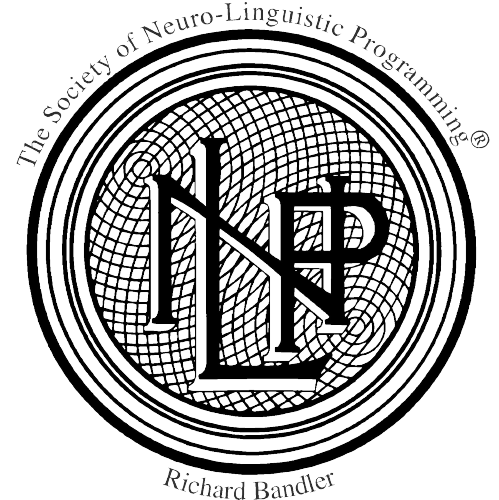Charisma is an invisible force, a gravitational pull that bends attention, shapes decisions, and alters the chemistry of a room. It grips before it is understood, felt before it is analysed. The air thickens, postures adjust, eye contact locks. A presence that rearranges the social order before a word is spoken.
It’s the speaker who commands silence before speaking, the leader who inspires loyalty without demand, the friend whose presence feels like a balm and a spark. We recognise it when we see it, but what is it? And why does it work?
The mistake is to think of charisma as a gift, an unteachable aura, a rare spark bestowed upon a lucky few—something to be envied rather than engineered. But this is a myth. Charisma is not magic; it is method. It is not a trait but a skill—a deliberate orchestration of behaviour that taps into the deepest layers of human psychology. Those who wield it are not merely engaging minds or hearts; they are navigating the intricate interplay of instinct, emotion, and reason, often without realising it.
This essay will explore charisma as a dynamic interplay between two modes of influence: the Cognitive (authoritative, competence-driven) and the Relational (warm, connection-focused). Yet, most people instinctively favour one over the other. Some lean on credibility but struggle with connection; others are effortlessly warm but fail to command respect. The true power lies not in preference but in precision—the ability to shift, to sense, to adapt.
These modes are not opposites but complements, each essential in its own right. The truly charismatic do not choose between them; they blend them, adapting in real time to the demands of the moment. Understanding this duality is not just a lesson in leadership—it is a masterclass in human connection.
Cognitive & Relational
Charisma is often mistaken for a singular quality, a kind of personal magnetism that radiates effortlessly. In truth, it is far more nuanced. What we perceive as charisma is the result of a fluid dance between two distinct modes of influence: the Cognitive, which commands through authority and competence, and the Relational, which connects through warmth and empathy. Mastering both is the key to unlocking presence, persuasion, and influence.

Credible Competence
Picture a pilot addressing passengers before takeoff. His voice is steady, his tone measured. He does not seek to charm or entertain; he informs, reassures, and projects control. His audience does not need him to be friendly—they need him to be competent. This is the Cognitive mode in action: leadership through expertise, clarity, and decisiveness.
Cognitive behaviour signals mastery. It is the domain of the strategist, the expert, the decision-maker. It projects authority not through emotional appeal but through logic, precision, and an implicit promise: I know what I’m doing, so you don’t have to worry. This is why Cognitive dominance is essential in high-stakes situations—when complexity is high, uncertainty looms, or structure is lacking. In such moments, warmth alone is insufficient; people need to feel they are in capable hands.
Consider Winston Churchill. His wartime speeches were not designed to comfort; they were designed to fortify. His clipped diction, his unflinching resolve—this was Cognitive influence at its purest. The power came not from charm but from certainty.
Yet certainty alone is not enough. A leader who operates solely in Cognitive mode risks appearing cold, distant, or even intimidating. Influence requires more than competence; it requires connection. This is where the Relational mode enters.
Approach & Connect
Now, imagine a flight attendant moving through the cabin, offering reassurance with a smile, using tone and body language to convey safety. Unlike the pilot, the attendant does not need to project authority but accessibility. Their role is not to command but to connect. This is the Relational mode: leadership through emotional intelligence, active listening, and a deep understanding of social dynamics.
Relational behaviour signals trust and care. It is the mode of the diplomat, the coach, the storyteller. Where Cognitive mode persuades through expertise, Relational mode persuades through empathy. It is most powerful in settings where cohesion, collaboration, and morale are paramount.
Oprah Winfrey exemplifies this mode perfectly. She does not impose authority; she invites trust. Her power lies in her ability to make people feel seen, heard, and understood. This is why she commands not just an audience but devotion.
However, just as the purely Cognitive leader can appear detached, the purely Relational leader can appear unfocused or indecisive. Trust alone is not always enough—at times, people need to know that someone is in charge.
The error is in thinking that one mode is better than the other. They are not opposites; they are complements. Charismatic individuals—whether leaders, speakers, or influencers—do not limit themselves to one approach. They blend them, deploying each at the right moment to create an irresistible pull on their audience.
This ability to fluidly switch between Cognitive and Relational behaviours is the true mark of charisma. It is not about being ‘warm’ or ‘authoritative’—it is about knowing when to command and when to connect.

Switching Modes
Charisma is not a static quality; it is a dynamic interplay between Cognitive authority and Relational warmth, shifting in response to context. A charismatic leader is not someone who is simply authoritative or simply warm, but someone who knows when to be which. The key is situational awareness—understanding what a given moment demands and adapting accordingly.
To illustrate, imagine a jazz musician. The art is not in rigidly following a script but in knowing when to introduce a sharp, commanding note and when to let the melody breathe. Leadership is much the same. The Cognitive mode cuts through uncertainty with clarity and decisiveness; the Relational mode builds trust and cohesion. When wielded intentionally, the two create an irresistible presence.
Familiarity & Size Matters
In a small, intimate group, the Relational mode reigns supreme. Trust is best built through warmth, eye contact, and a shared sense of rapport. This is why a dinner host, a therapist, or a mentor naturally defaults to a relational approach—intimacy thrives on connection.
But as the group grows, intimacy fades. In a large, unfamiliar setting, warmth alone does not carry weight. This is where Cognitive dominance becomes essential. A politician addressing a crowd cannot afford to rely on personal charm alone; their presence must fill the space with certainty and command.
Consider the difference between a one-on-one conversation with Barack Obama and his delivery on a public stage. In private, he is warm, engaging, deeply relational. In a speech, he is controlled, deliberate—Cognitive mode in action. The shift is not a change in personality, but a shift in strategy.
Structure Before Connection
In any newly formed group—whether a team, an organisation, or a community—uncertainty looms. Roles are unclear, dynamics are unsettled, and without structure, confusion takes hold. This is where Cognitive behaviour is indispensable: setting clear expectations, defining purpose, establishing authority.
A military commander leading recruits, a CEO taking charge of a newly merged company, a teacher on the first day of class—all must begin in Cognitive mode. Without structure, warmth is wasted. But once the group stabilises, once individuals understand their roles, the leader can shift into the Relational mode, fostering cohesion, collaboration, and trust.
The inverse is equally true. Without warmth, structure is brittle. A leader who enforces clarity without connection builds compliance, not commitment. Commands may be followed, but the hearts remain unmoved.
Dysfunctional groups follow the same rule: clarity must precede connection. When a team is floundering, the instinct may be to be more relational—to smooth things over, to seek consensus. But without a Cognitive intervention—re-establishing goals, responsibilities, and accountability—confusion will only deepen.
The mistake many leaders make is in getting stuck in one mode, either remaining overly Cognitive (too rigid, too directive) or overly Relational (too accommodating, too hesitant to impose order). Charisma lies in knowing when to transition.

Charisma Catalyst
Charisma, at its core, is a paradox. It is the ability to command attention while making others feel seen. It is the capacity to project absolute certainty while remaining adaptable. It is neither pure authority nor pure warmth but a seamless dance between the two. The figures we find most captivating—the leaders, the speakers, the performers who seem to glow with presence—are not simply competent or simply likable. They are both.
And crucially, they are both at the same time.
This blending of Cognitive and Relational modes is the true essence of charisma. It is not just about knowing when to switch between them, but about layering them simultaneously—holding them in tension, like a tightrope walker maintaining perfect equilibrium. The reason this is so effective lies deep in human neurophysiology.
Dual Engagement Effect
Consider a masterful conductor at the podium, arms raised, the orchestra poised in silent anticipation. A flick of the baton, a breath held—then movement. Their gestures do more than direct; they ignite. Each motion carries technical precision—exact tempos, dynamic shifts, precise cues—while simultaneously breathing life into the music’s emotional heart. The audience experiences both the mathematical precision of the rhythm and the sweeping emotion of the melody. They don’t just understand the music; they feel it in their bones.
This dual nature of influence mirrors how we process the world around us. Watch a child learning to ride a bicycle. Their mind recites instructions—”keep pedalling, look ahead, balance”—while their body negotiates reality. The conscious brain calculates, the unconscious brain reacts. They don’t think their way to balance; they feel their way there. And then, in an instant, it clicks—effortless, instinctive, unstoppable.
Most communicators unconsciously favour one channel over the other. The Cognitive-dominant leader speaks to our analytical mind—convincing through logic, clarity, and expertise—but may leave us cold, unmoved at a deeper level. They are precise but distant, authoritative but unmemorable. Their words persuade, but their presence does not linger.
Like reading a brilliant but emotionally sterile academic paper, we may agree with every point while feeling no compelling urge to act. The Relational-dominant leader, conversely, touches our hearts—making us feel valued, understood, connected—but might leave our minds hunting for substance, like a moving speech that stirs feelings but offers no clear direction. We trust them, we feel them, but do we follow them? Their warmth engages, but their certainty wavers.
Charismatic leaders, however, engage both channels simultaneously. They weave a tapestry of influence that speaks to both our yearning for clarity and our hunger for connection. Like that conductor, they orchestrate a performance that satisfies both our need to understand and our desire to feel. Their words convince while their presence compels. Their logic illuminates while their energy inspires.
This is why certain figures command attention so effortlessly. They create what musicians call resonance—when multiple strings vibrate in harmony, each amplifying the others. The mind finds clarity while the heart finds truth. The conscious-self nods in agreement while the unconscious-self leans in with recognition. This resonance is more than persuasion; it’s gravitational. It bends attention, aligns energy, alters tempo. We don’t just follow them—we sync with them, drawn in through channels we barely recognise but powerfully feel.
Think of how a skilled parent soothes a frightened child. They don’t simply present logical arguments about safety; nor do they merely offer emotional comfort. Instead, they blend both—their calm voice and steady presence providing immediate reassurance, while their clear explanations help the child make sense of their fears. This dual engagement creates an effect far more powerful than either approach alone could achieve.
This is the true secret of charismatic presence—not just being heard but being felt. Not just sense-making but meaning-making. When someone masters this art, they don’t just occupy space in our minds; they shape the rhythm of our thoughts. Their influence lingers—not as memory, but as momentum. Like the haunting echo of a perfect orchestral performance, they are not merely understood. They are felt.
The Invisible Art
Charisma is not a mystical force nor a genetic gift—it is a learnable discipline. At its core, it is the ability to engage both the rational and emotional minds of others simultaneously, triggering both trust and respect, warmth and authority, connection and command. Those we remember as truly charismatic are not merely confident or charming; they are masters of behavioural blending, shifting fluidly between Cognitive credibility and Relational warmth with impeccable timing.
The secret to their magnetism is not in what they say but in how they make people feel. They calm the instinctual brain, engage the social brain, and stimulate the rational brain, creating an effect that is both deeply felt and intellectually compelling. This is why their presence lingers, why their words carry weight, why they seem larger than life—they activate the full spectrum of human perception.
The great paradox of charisma is that it is both powerful and subtle, commanding yet effortless. It cannot be reduced to a set of static traits or techniques; it is a living, adaptive quality, responsive to the moment, tuned to the needs of the room. It is not something you do, but something you become.
With practice, this fluidity of influence becomes instinctive. And when it does, something remarkable happens—people are drawn to you without quite knowing why.
That is the invisible art of charisma.



